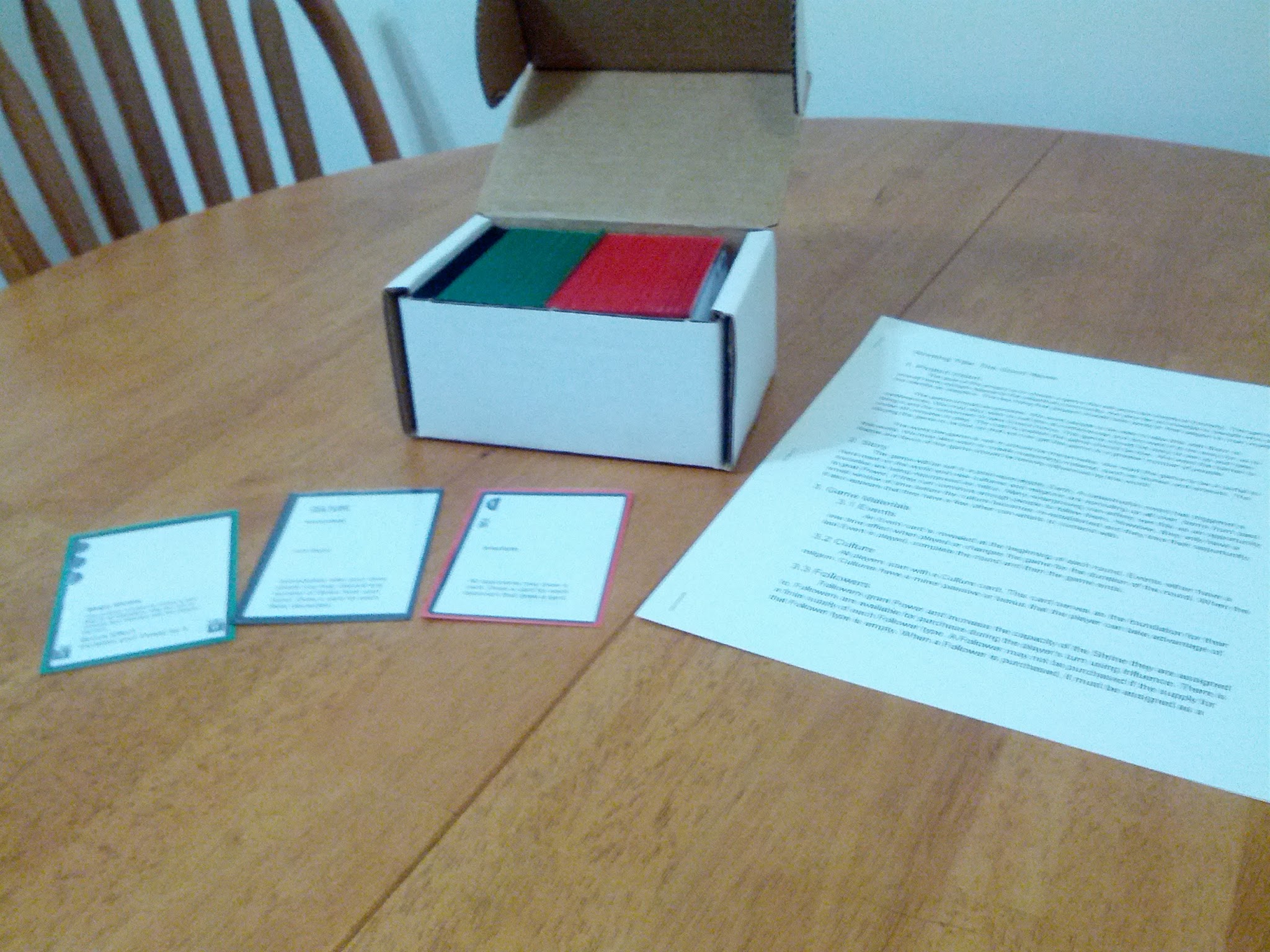Streamlining
It’s been a while since we’ve updated you on our progress, but we’ve been working hard. Most of the mechanics work has been focused on streamlining the game and making it more accessible to new players. I wanted to give you all an update on the things we’ve been doing to that effect.
We used to have a concept called “Storage”, which determined how many Relic cards you could have in play. Players started with a default storage of 1 and could get more by playing or buying certain cards. Storage was a value that would frequently change, which made it tough for players to keep track of and make sure they had enough storage for all their Relics. We wanted to get rid of this confusing concept while retaining the limiting factor on the Relics. Our current solution is to say that each Shrine can hold 1 Relic. This is a more natural progression and is very easy to visualize. It has the added bonus of increasing the value of Shrines and makes more sense thematically.
Previously, the mechanics wording on Influence cards were very flavorful. I was using a lot of keywords like “Discredit” and “Sacrifice”. To justify using these words, the rules had a glossary that players could use to look up their meanings. With the help of our playtesters, I came to realize how silly this was. By using direct and unambiguous language we make the game easier to learn and teach. Now instead of telling a player to “Sacrifice a Follower”, I tell them to “Remove a Follower you control from play”. It’s not very flowery and it’s much wordier, but a player can pick up this card and know what it does without having to cross reference the rules. We can just let the flavor text handle all the thematics.
One thing we are consistently working towards is reducing the amount of information we bombard the player with. We moved in the right direction with the Tribute changes, but we are now taking it a step further. Now whenever you draw a card, including at the end of your turn, you draw it face down. Face down cards can be spent, just like cards in your hand. At the end of your turn you can put these face down cards into your hand, up to a maximum of 6 cards in hand. This means that a player will only have to read, understand, and plan based on a maximum of 6 cards at a time. Since the players can still spend these face down cards, it doesn’t impact our existing economy. This also creates some consistency in how players draw cards, instead of having them sometimes draw face down and sometimes draw to their hand.
Lastly is a change that I will be trying out at our next playtest, so it may not stick. When we first introduced the idea of Prophecies I was very pleased with them. However, I’ve become less taken with them as time has gone on. The purpose of Prophecies was to make the game end dynamically so that players wouldn’t get an advantage based on turn order. While they perform this function well, Prophecies add quite a few rules to the game. I’ve also seen an unpleasant phenomenon where a player will need to completely calculate the current score of each player before they can feel confident playing the Prophecy that will end the game. In light of these issues I plan to do away with Prophecies and instead have Event cards trigger when a purchase pile is emptied or the Influence deck runs out and is reshuffled.
Combined, these modifications significantly reduce the length of my rules explanation. And while I’m not sure we will end up using all of these changes, I think we’re heading in the right direction. I’m looking forward to further playtests.

